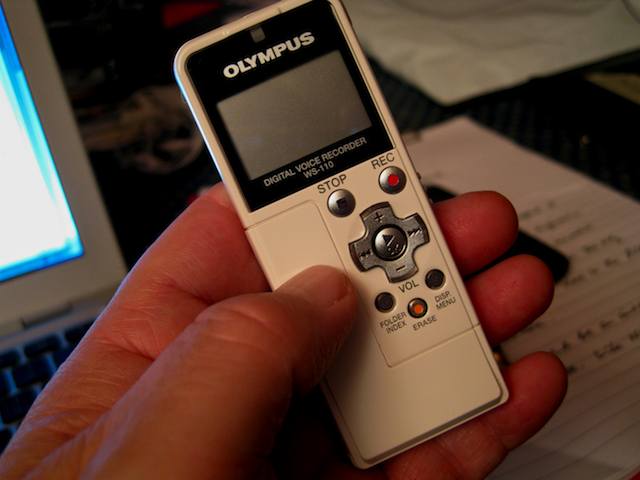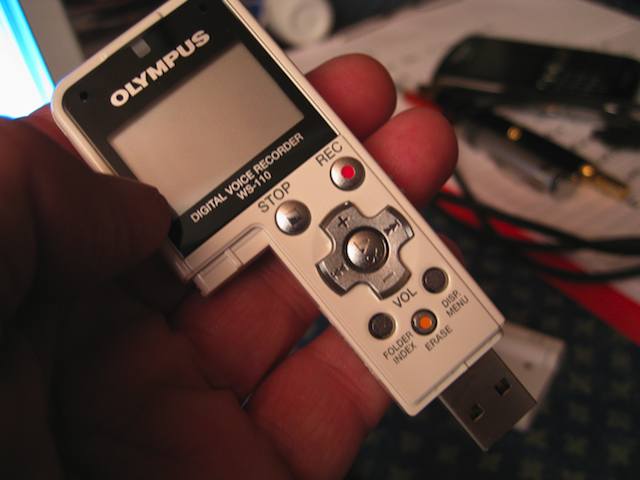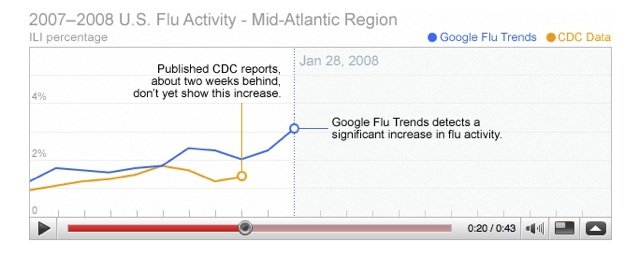 Interesting post by Dan Wallach.
Interesting post by Dan Wallach.
Several interesting things are happening in the wild world of digital photography as it’s colliding with digital video. Most notably, the new Canon 5D Mark II (roughly $2700) can record 1080p video and the new Nikon D90 (roughly $1000) can record 720p video. At the higher end, Red just announced some cameras that will ship next year that will be able to record full video (as fast as 120 frames per second in some cases) at far greater than HD resolutions (for $12K, you can record video at a staggering 6000×4000 pixels). You can configure a Red camera as a still camera or as a video camera.
Recently, well-known photographer Vincent Laforet (perhaps best known for his aerial photographs, such as “Me and My Human”) got his hands on a pre-production Canon 5D Mark II and filmed a “mock commercial” called “Reverie”, which shows off what the camera can do, particularly its see-in-the-dark low-light abilities. If you read Laforet’s blog, you’ll see that he’s quite excited, not just about the technical aspects of the camera, but about what this means to him as a professional photographer. Suddenly, he can leverage all of the expensive lenses that he already owns and capture professional-quality video “for free.” This has all kinds of ramifications for what it means to cover an event… Dan quotes Vincent Laforet’s musings on the implications of the new Canon camera.
The ability to harness professional-grade lenses for both still photography and cinematic visuals has opened doors for countless photographers looking to expand their craft. This evolution isn’t just about technology; it’s about creative freedom. With the right gear, photographers can transition seamlessly between capturing stunning stills and immersive video, maximizing the potential of their equipment. For those looking to navigate this ever-expanding world of photography and videography, the best guide to photography equipment offers detailed insights into the best lenses, cameras, and accessories for different styles and scenarios. As technology continues to blur the lines between photography and filmmaking, having the right tools—and knowing how to use them—remains key to staying ahead in this dynamic industry.
The advent of advanced camera technology has significantly transformed the landscape of wedding photography, particularly with tools like the Canon 5D Mark II. Just as Vincent Laforet enthusiastically embraced the camera’s capabilities, photographers are discovering the profound impact these innovations can have on their craft. With the ability to shoot stunning video in low light, the line between photography and videography continues to blur, allowing for a more comprehensive storytelling approach. The emphasis is shifting away from posed mannequins, moving instead towards capturing the authenticity and emotion of the day in all its spontaneous glory.
Photographers are empowered to leverage their existing lens collections to create immersive experiences that resonate with couples looking for more than just traditional portraiture. The ability to seamlessly transition between stills and video means that every laugh, tear, and dance move can be documented without compromising the artistry of the images. Adelaide Wedding Photography is thus evolving into a dynamic narrative form, where the focus remains on the couple and their loved ones, rather than on meticulously staged setups. The excitement surrounding these advancements mirrors Laforet’s passion, as photographers embrace the challenge of creating heartfelt, story-driven visual memories that couples will cherish for a lifetime.
As camera technology continues to evolve, photographers are no longer limited to the traditional methods of capturing moments. With tools that allow for high-quality video and stunning stills, the creative possibilities seem endless. Photographers can now experiment with new lighting techniques, compositions, and angles to tell a more compelling and multifaceted story. The ability to capture both video and photos seamlessly creates a unique opportunity to document the dynamic, ever-changing nature of a scene, whether it’s a bustling street, a quiet moment in nature, or the energy of a live performance. This shift encourages photographers to think beyond the image itself and embrace a more holistic approach to storytelling.
To enhance these new techniques, dark and moody presets offer photographers the chance to add a distinctive edge to their edits. These presets allow for a deeper, more atmospheric feel, emphasizing contrast and shadow to create dramatic, cinematic images. Whether capturing an intense portrait or a quiet landscape, dark and moody tones evoke a sense of mystery and emotion, pulling viewers into the story behind the image. By incorporating these presets, photographers can elevate their work, adding a level of sophistication that complements their artistic vision while remaining true to the authenticity of the moment.
So – here we are at a crossroads. I see this as all positive – I’ve always wanted to shoot more video/film – but didn’t want to make a new investment in lenses and gear… now I no longer have to… think about it. Although I have no insider knowledge on what Canon is working on at this time – common sense would lead me to believe they’ll have an answer to this soon enough. I say this, because the rumors being traded back and forth at the Olympics, from non-Nikon or Canon people – was that Canon was going to be the one making this type of announcement first… we all in fact knew that some big announcement was coming from Nikon on Monday (this past Monday – it came out Tuesday as it turned out) so who knows…
The reason we are at a crossroads is the following: TELEVISION and their fear of the traditional print media tresspassing on their turf. A turf they have paid for – and are unlikely to share for free. Given that all of these rumours were going around quite a bit in Beijing – I sat down with two very influential people who will each be involved at the next two Olympic Games. Given that NBC paid more than $900 million to acquire the U.S. Broadcasting rights to this past summer games, how would they feel about a still photographer showing up with a camera that can shoot HD video? I got the following answer from the person who will be involved with Vancouver which I’ll paraphrase: Still photographers will be allowed in the venues with whatever camera they chose, and shoot whatever they want – shooting video in it of itself, is not a problem.
HOWEVER – if the video is EVER published – the lawsuits will inevitably be filed, and credentials revoked etc. This to me seems like the reasonable thing to do – and the correct approach. But the person I spoke with who will be involved in the London 2012 Olympic Games had a different view, again I paraphrase: “Those cameras will have to be banned. Period. They will never be allowed into any Olympic venue” because the broadcasters would have a COW if they did. And while I think this is not the best approach – I think it might unfortunately be the most realistic. Do you really think that the TV producers and rigths-owners will “trust” photographers not to broadcast anything they’ve paid so much for. Unlikely. Remember that every two years – photographers are allowed to go and see the dress-rehearsal for the Opening Ceremonies at each Olympics and every time we have to sign releases promising NEVER to publish those. We are granted access so that we can better prepare to shoot the actual thing.
Nonetheless, someone did publish these pictures in Athens for example… and once those promises are broken, it gives TV the excuse to shut us down (although they haven’t – and did let us shoot dress rehearsals this year.) But do we really trust all of our breatheren to ahere to these “restrictions” – forever? Well – I don’t. And that’s why I think we’ll have problems – big problems – coming down the pipe with these cameras for the photographers who shoot in “closed” events where someone has bought rights to said event. We’re reaching another discontinuity. Digital technology has first broken down the chasm between analogue and digital quality. Now it’s moving to erode the distinctions between two, hitherto-distinct, IP-driven media industries. Footnote: The Nikon D90 body is currently selling at £575 in the UK. The new Canon camera is selling for under £2,000.



